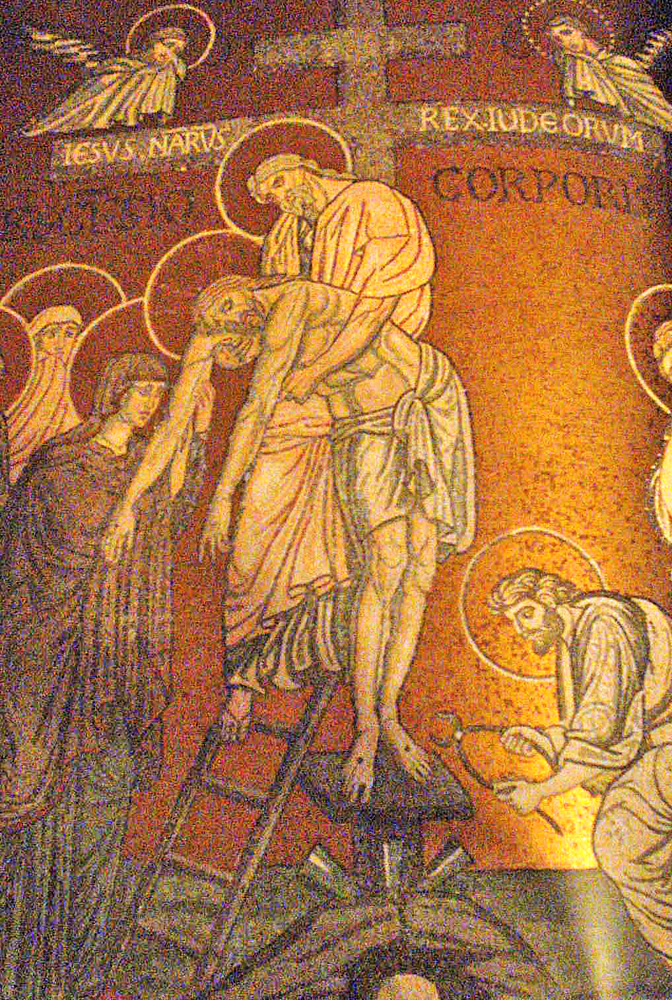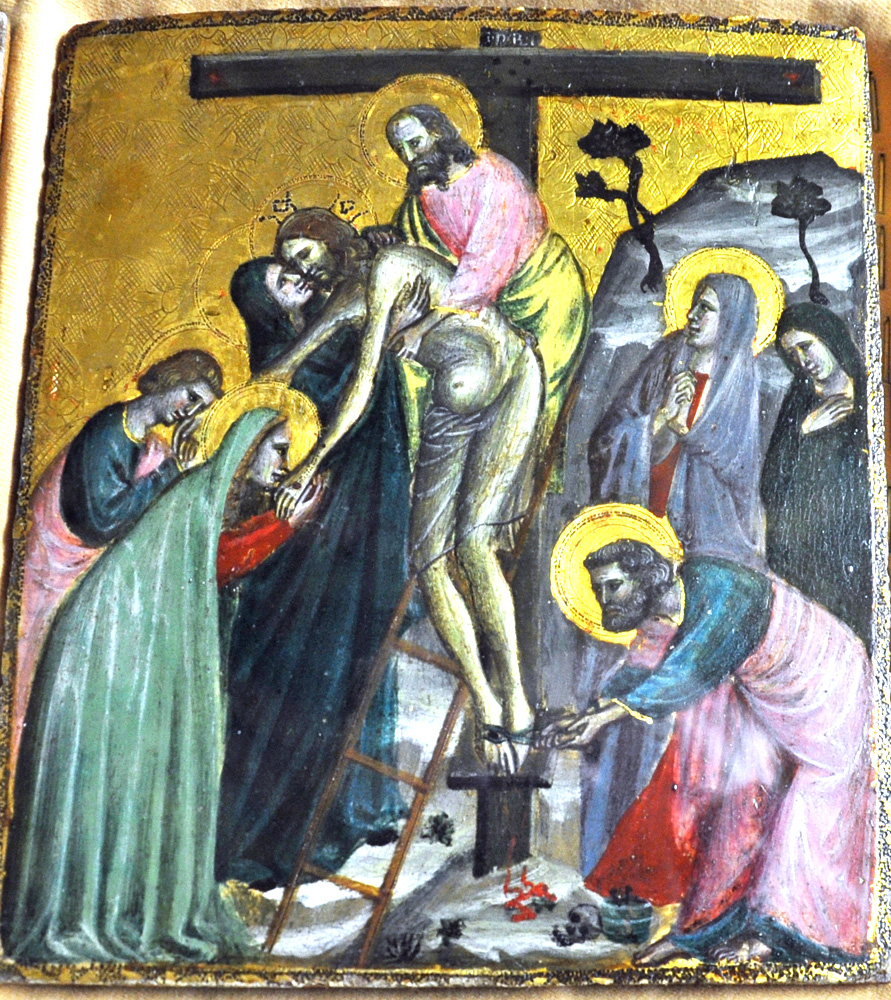At the top of a ladder placed against the cross, one man holds the body by the chest while another releases the feet – either by untying cords or by removing nails with a pincer. The wounds in the hands and feet are visible. Mary stands at left and kisses either Jesus' arm or his face. In the latter case, the arm may be kissed by Mary Magdalene. Women stand in the background.The two men working on the body are presumably Nicodemus and Joseph of Arimathea, who remove the body in John 19:40.
This pattern continues for a while after the 14th century, but there always were many individual approaches to the subject and starting in the 15th there is little consistency of approach.
An image of this type is traditionally referred to as "The Deposition" or "The Descent from the Cross." Perhaps the latter is preferable, because a number of images titled "The Deposition" are actually about the placing of the body in the tomb (example).
Prepared in 2016 by Richard Stracke, Emeritus Professor of English, Augusta University.
HOME PAGE

Mosaic in Monreale Cathedral, Sicily (See the description page)

Duccio di Buoninsegna, 1308-11 (See the description page)

Riminese School, 14th century (See the description page)
OTHER IMAGES
- 13th century: Sculpture group in Huelgas Monastery, Spain.
- 1344: Detail from Guariento di Arpo's Coronation of the Virgin altarpiece.
- 1444: In this fragment of stained glass two young men help Nicodemus and Joseph of Arimathea, using a cloth band to help support the body.
- 16th century (?): Sculpture group in the Cathedral of Santiago de Compostela.
- 1547-51: A detail in the main altarpiece at Cáceres Cathedral.
- 1550: At the Church of Santa Maria dell'Anima in Rome a 16th-century painting of the dead Jesus encircled by mourners is labeled "The Deposition," but there is no cross or ladder.
- 1600-1604: Caravaggio's Deposition appears to picture not the descent from the cross but preparations for the entombment.
NAMES
- The subject is sometimes called "The Deposition"
ALSO SEE